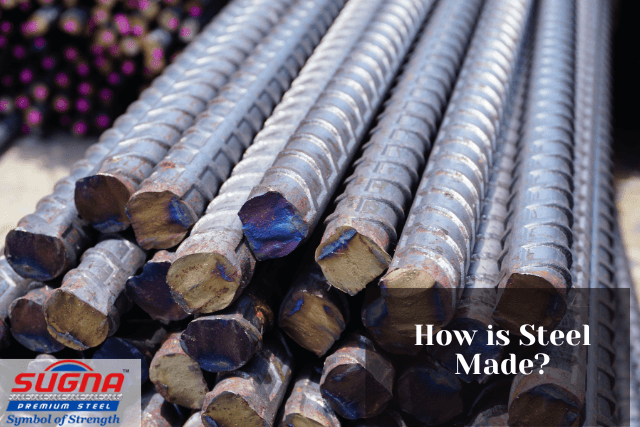The production of steel is a vital sector of the economy that affects the entire world. Since the middle of the 19th century, steel has grown to be one of the most widely used building and manufacturing materials in the world.
Although at first glance it may not seem like a product connected to cutting-edge technology, steel production has evolved significantly. In this guide, you will get a detailed insight into how steel is produced in the present day.
The Composition of Steel
Steel is an iron and carbon alloy. It may contain trace amounts of silicon, phosphorus, sulfur, and oxygen. Steel has a carbon concentration of 0.08 to 1.5 percent. As a result, it is less brittle than cast iron but more resilient than wrought iron.
Steel possesses a special balance of tensile strength, flexibility, and hardness. Compared to the softer wrought iron, it is more resilient and keeps a sharper edge better. It also withstands tensile more effectively than cast iron, which is more brittle.
How Steel is made?

The Bessemer process, which is still used today, was first used to produce steel in 1856. Most people agree that it was the first method used to make steel in significant quantities.
Historians claim that two separate inventors, one in Pittsburgh and the other in the UK, simultaneously created a method for producing steel that entailed removing impurities from iron using air.
As a result of this discovery, other steel manufacturers set out to refine the procedure. Eventually, they found a way to use the air-blasting technique to partially remove impurities while still helping to preserve the carbon content.
In the end, the procedure developed into a highly efficient method for making high-quality steel in large quantities, which we still use today. In light of this, the six steps of steel production are described below.
Step 1: The Production of Iron
Since iron is the primary ingredient in steel, it must first be produced. To melt iron ore, lime, and coke, blast furnaces are employed. The end outcome is the formation of molten iron. Impurities like carbon in molten iron must be removed since they still make the metal brittle and are present in small amounts (4%–4.5%).
Step 2: Making Primary Steel
Basic Oxygen Steelmaking (BOS) and Electric Ark Furnaces (EAF) are the two fundamental processes for producing steel. In BOS techniques, for instance, molten iron is added when it is in the furnace along with scrap (recycled) steel.
The Bessemer process is then used to drive oxygen through the liquid, reducing the impurities in the molten metal to 0.5%-1.5%.
As an alternative, the EAF method involves feeding molten iron and recycled steel into an electrical ark furnace, which is then heated to about 1650 degrees Celsius to transform the iron into high-grade steel.
Step 3: Making Secondary Steel
The freshly generated molten steel must be modified to provide the ideal steel composition. Changes in temperature or the addition or subtraction of particular components are used to achieve this. This could involve procedures like ladle injection, stirring, or argon bubbling.
Step 4: Continuous Casting
The next step is to pour the steel into cooled molds now that we have the basic structure in place. The metal consequently cools off quickly.
Depending on the application, the metal is subsequently cut into the necessary lengths, such as slabs for plates, blooms for longer goods like wiring or thin pipes, and billets for shorter products like beams.
Step 5: Primary Forming
The initial shapes of slabs, blooms, and billets are often formed into their various shapes by hot rolling, also known as primary shaping. After being hot rolled, the goods are sorted into flat, long, seamless tubes, and specialty products for a final step of processing.
Step 6: The Manufacturing, Fabrication, and Finishing
Finally, the products’ distinctive shapes and qualities are achieved by various secondary forming procedures, such as shaping, machining, jointing, and coating.
Related Posts:
- What Is The Density Of Steel?
- What Are Mini Steel Plants?
- Which Is More Elastic Rubber Or Steel?
- Mild Steel vs High Steel
Bottom Line
So there you have it—six simple methods to make steel from scratch! I hope the blog provided you with valuable insights into the process of making steel.

